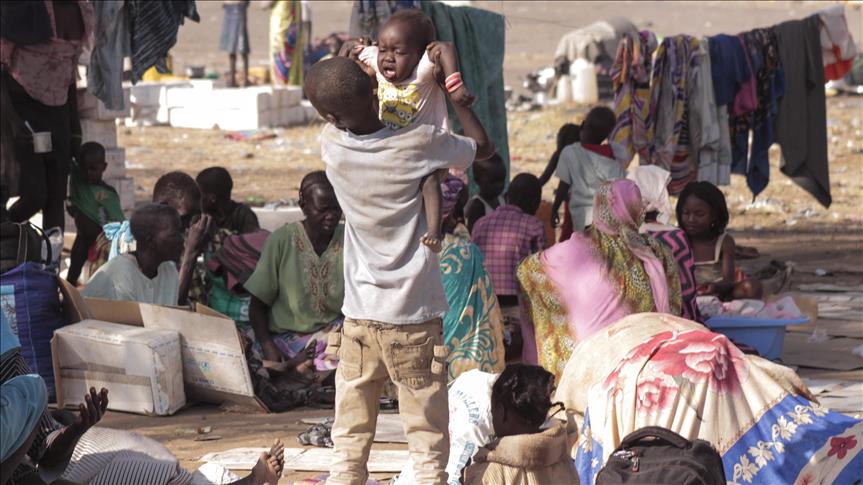
By
JUBA, South Sudan
The situation of internally displaced people in South Sudan is so desperate that many citizens stuck in one war-ravaged zone want to escape to another in the hope that maybe there they will find a better life within the country.
Up to 4,000 people in the country’s southwest are yearning to return to their homes in the oil-rich Upper Nile region. They know that both places have been engulfed by war, but they still somehow believe the grass may be greener on the other side.
“I have a week [been] here at the airport, I want to go back home. I know where [I] am going to [Upper Nile] is not a safe place but it is my homeland,” Monylang said.
But what can someone like Monylang do there to rebuild his life? “I can farm. I owned a big hectare of land. Although my [farm] was burned down…I can still struggle and reopen it again,” he said.
More than 2.4 million South Sudanese fled their homes due to ongoing civil war, which is now in its fourth year. Most people have left the country and settled in neighboring countries, including Uganda, Kenya, Sudan and Ethiopia; however, a big majority continues to live in UN-managed internally displaced people’s camps within South Sudan where they remain without any jobs and are completely dependent on aid.
Worn down by years of hardship in the camps, many people now hope the new national dialogue launched by President Salva Kiir last December would bring peace and allow millions of displaced people to finally return to their homes.
- Government backs 'voluntary return'
The government says it supports the voluntary return of internally displaced persons at the UN camps to return home. In fact, Humanitarian Affairs Minister Hussein Maar
“We were surprised that some of them were eager to return home; some express willingness while others are skeptical due to insecurity,” Maar said.
He clarified the government was not forcing people to return. “It only supports the process,” he added.
So far, more than 4,000 internally displaced people have returned to their homes, he said, adding: “Around 3,000 left the UN camps in Juba last year in December and headed to villages.”
- 'No safe place'
Rebecca
“I ran to Yei for the safety of my children, there
Yei used to be a beacon of relative stability in South Sudan’s long conflict. However, while the rest of the country gradually got engulfed in the conflict, abuses against civilians -- by both government forces and rebel groups -- soon spread to that region as well.
Simon Akim, another returnee, said: “We don't know what will happen, but we are going back whether the war ends or not," Akim said, adding: "God willing, peace will come to South Sudan whether it comes from President Kiir’s recent national dialogue or the grassroots.”
- UN body concerned
Meanwhile, the UN Refugee Agency views the movement of internally displaced people with deep concern.
"It is a dangerous choice for people to make, there is still fighting in Upper Nile and humanitarian assistance remains a challenge," a top UN refugee agency official in Juba, who requested anonymity for fear of repercussions from South Sudanese authorities, said.
He said the return of displaced people, mainly women and children, to war-affected states of Upper Nile "signals a failure of the international protection regime."
South Sudan’s violent conflict erupted in December 2013, producing one of the world’s worst displacement situations with immense suffering. Some 1.4 million people are displaced inside the country, while there are now one million South Sudanese refugees abroad, mainly in Ethiopia, Sudan and Uganda.
The war has already claimed tens of thousands of lives, according to the World Food Programme last December; more than half of all households in Juba do not have access to enough food, which is more than double the figure from 2015. Nationwide almost a third of the country’s about 11 million people face severe food shortages, with hunger levels expected to double this year.
Anadolu Agency website contains only a portion of the news stories offered to subscribers in the AA News Broadcasting System (HAS), and in summarized form. Please contact us for subscription options.


